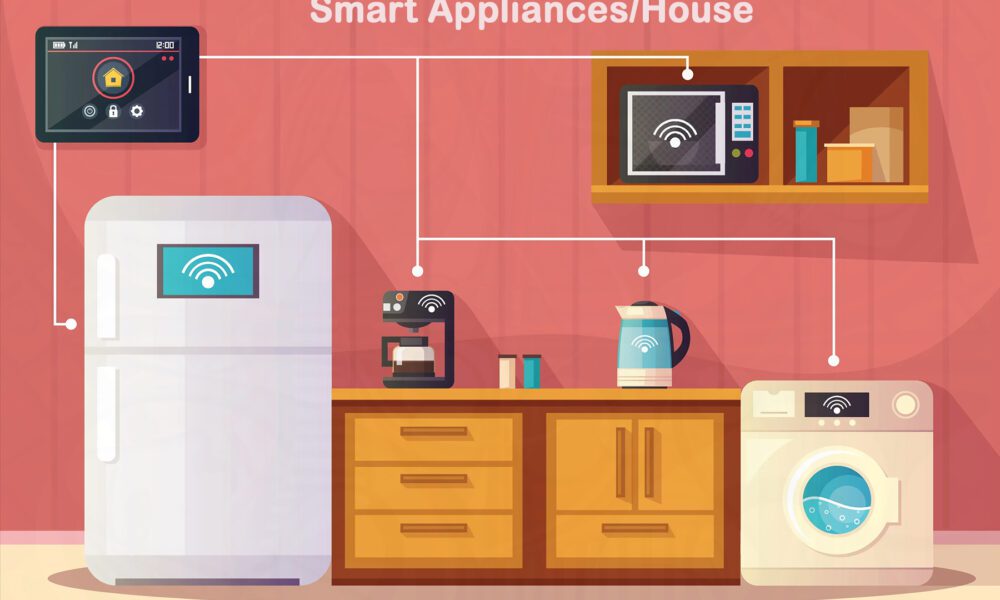Decoding Smart Appliances: The Power of Closed-Loop Control Systems

Introduce
In today’s fast-paced world, technology continues to revolutionize every aspect of our lives, including the way we manage our homes. Gone are the days of simple, stand-alone devices. We are now witnessing the rise of smart appliances that are redefining concepts of convenience and efficiency. In this blog post, we’ll explore the evolution of home appliances and delve into why they’re getting smarter.
What is Smart Appliances
Smart home appliances are home appliance products formed by introducing microprocessors, sensor technology, and network communication technology into home appliances. They have the ability to automatically sense the status of residential space, the status of home appliances themselves, and the status of home appliance services. They can automatically control and receive information from residential users in the home or remotely. control instructions; at the same time, as an integral part of smart home, smart home appliances can be interconnected with other home appliances, home furnishings, and facilities in the house to form a system to realize smart home functions.
The core of smart home appliances lies in the closed-loop control system, which is a control system based on a feedback mechanism that can monitor environmental variables in real time and adjust the equipment based on feedback information to maintain or optimize performance. The closed-loop control system consists of the following key components:
- Sensors: Smart home appliances are equipped with various types of sensors for sensing environmental parameters such as temperature, humidity, light, etc. These sensors can collect data in real time and transmit it to the control system for processing.
- Control algorithm: The control algorithm is the core of the closed-loop control system. It is responsible for analyzing sensor data and making corresponding adjustments according to the preset control strategy. These algorithms are often based on error signals in a feedback loop to adjust the operation of the device so that it achieves a desired state or performance.
- Actuator: An actuator is the component in a closed-loop control system responsible for executing adjustment commands, such as a motor, valve, or heating element. Once the control algorithm determines how the equipment operation needs to be adjusted, the actuators act accordingly according to the instructions.
- Feedback Loop: This is a key component of a closed-loop control system that compares the actual output of the device to the desired output and feeds the error signal back to the control algorithm. The control algorithm adjusts the device based on this feedback information so that it gradually tends toward the desired state or performance.
Smart appliances vs traditional appliances
Smart home appliances achieve adaptability and intelligence through closed-loop control systems. For example, a smart thermostat can automatically adjust the heating or cooling system according to indoor temperature changes to maintain a comfortable indoor environment; a smart washing machine can adjust the washing program according to the type of clothing and load size to save water and energy. These smart functions not only improve the efficiency and performance of home appliances, but also enhance user comfort and convenience, reflecting the core role of closed-loop control systems in smart home appliances.
Traditional appliances vs Smart appliances
Traditional home appliances usually use open-loop control systems. Open loop control system compared to closed loop control system. Open-loop systems lack feedback information on the actual output and therefore cannot adjust operations in real time to respond to changes in the external environment or deviations in the equipment itself. In contrast, open-loop control systems perform tasks based on preset operating parameters without considering feedback information from the actual output.
For example, traditional electric kettles usually only boil water by setting the heating time and power, without considering real-time changes in water temperature. This means that if the water temperature exceeds the required temperature, heating will continue, resulting in a waste of energy. Similarly, a traditional washing machine may only perform washing tasks based on preset washing programs and cannot adjust based on the actual state of the clothes during the washing process.
The disadvantage of open-loop control systems is their limited ability to adapt to the external environment and internal deviations, which can lead to unstable or inefficient performance. In contrast, closed-loop control systems can adjust operations through real-time feedback information, making equipment more intelligent, adaptive and efficient. Therefore, with the development of technology and the rise of intelligence trends, more and more home appliance manufacturers are beginning to apply closed-loop control systems to their products to improve performance and provide a better user experience.
The difference between smart home appliances and traditional home appliances cannot simply be distinguished by whether they have an operating system installed or whether they have a chip installed. Their difference is mainly reflected in the expression of the word “intelligence”. Compared with traditional home appliances, smart home appliances have more functional features, are more intelligent, have better user experience, and are also more energy-saving and environmentally friendly. With the continuous advancement of technology, smart home appliances will become more popular and developed in the future.
Summary
Today, smartphones have entered public life and become the ultimate control terminal, laying the foundation for the popularization of smart home appliances. Some smart home appliances can already be remotely controlled through a mobile phone. I believe that in the near future, with the advancement of integrated circuit chip technology and the development of smart home appliances (better experience and lower prices). Smart home appliances will definitely enter thousands of households like ordinary home appliances.
Reference: https://www.ntchip.com/electronics-news/difference-between-open-loop-and-closed-loop





